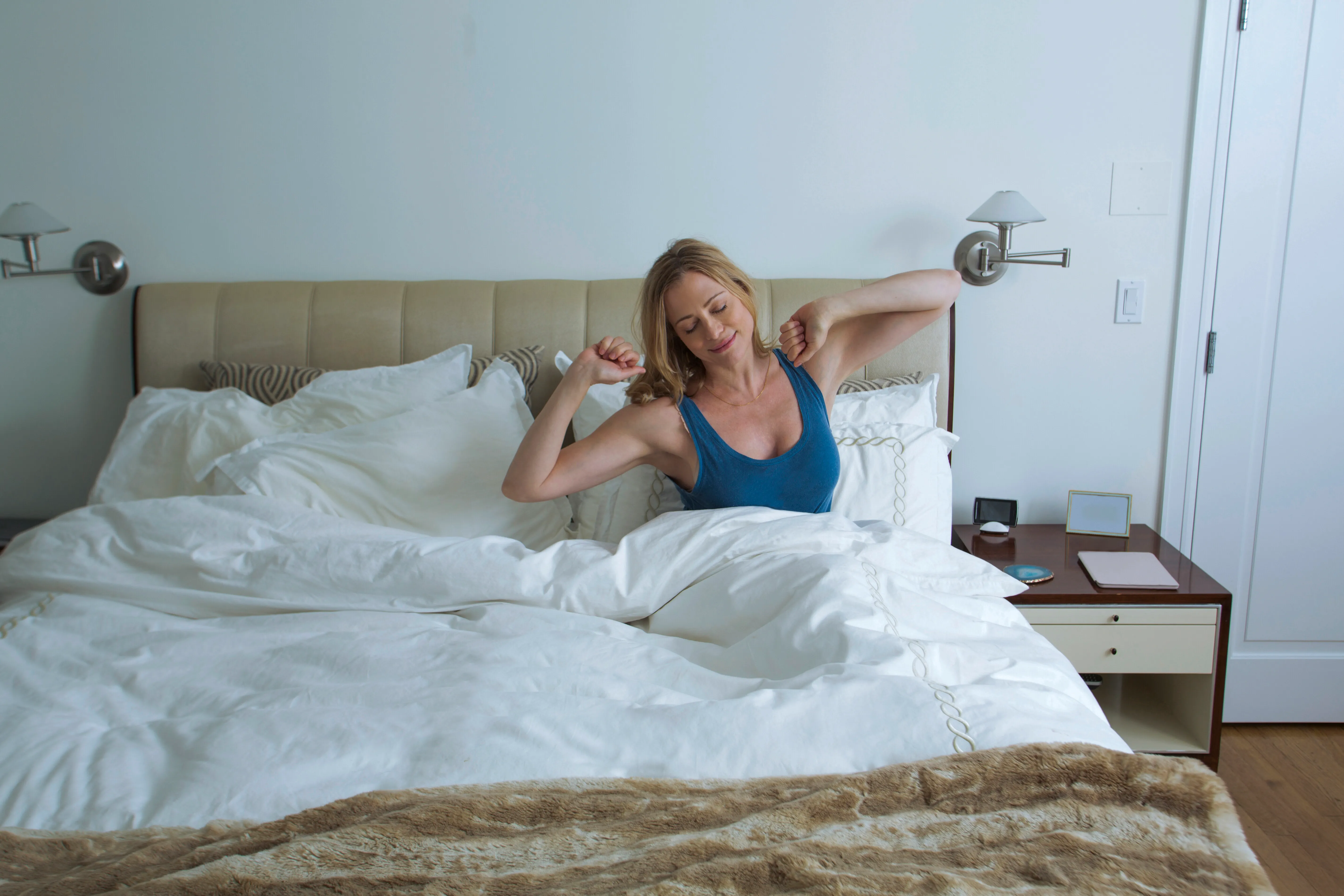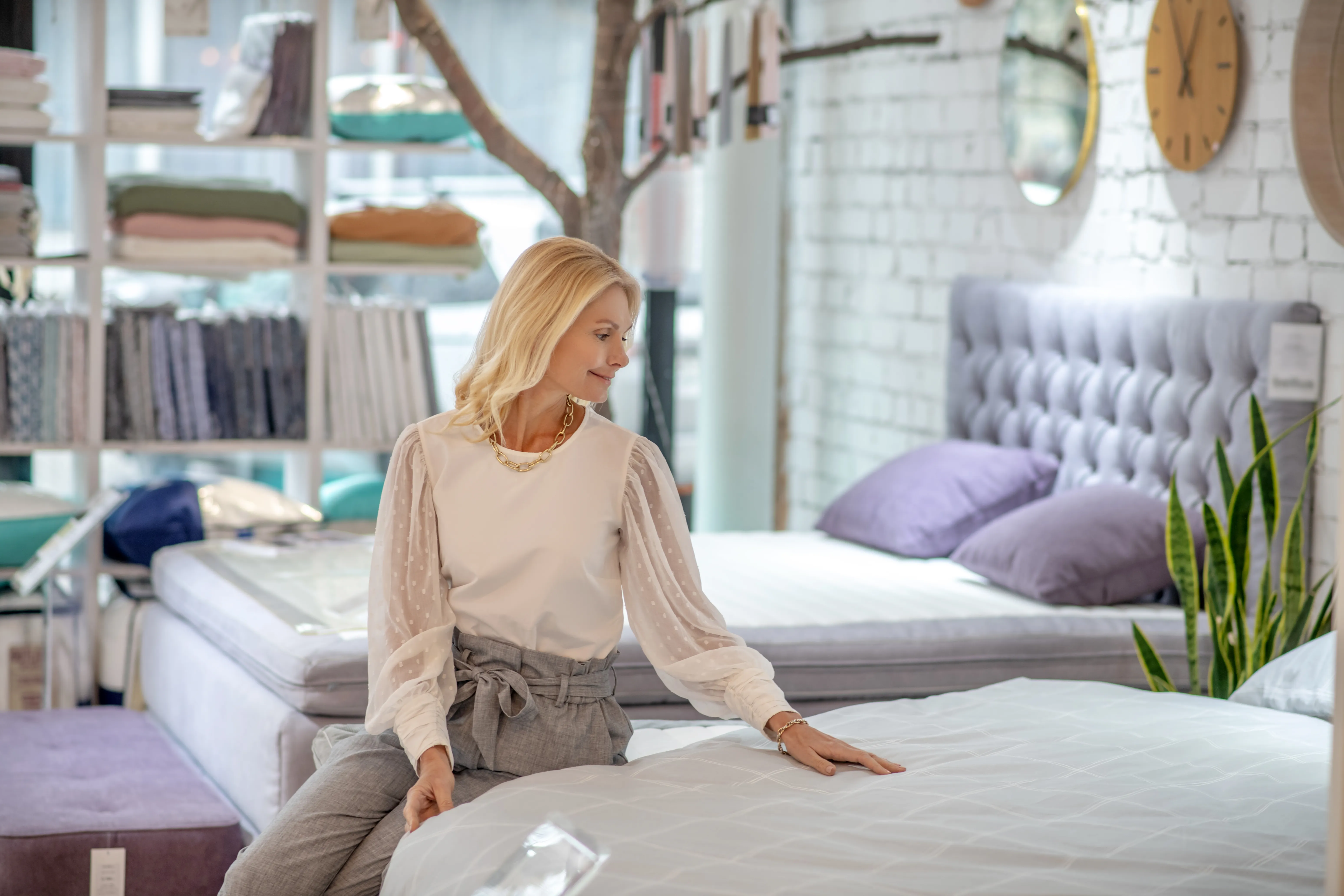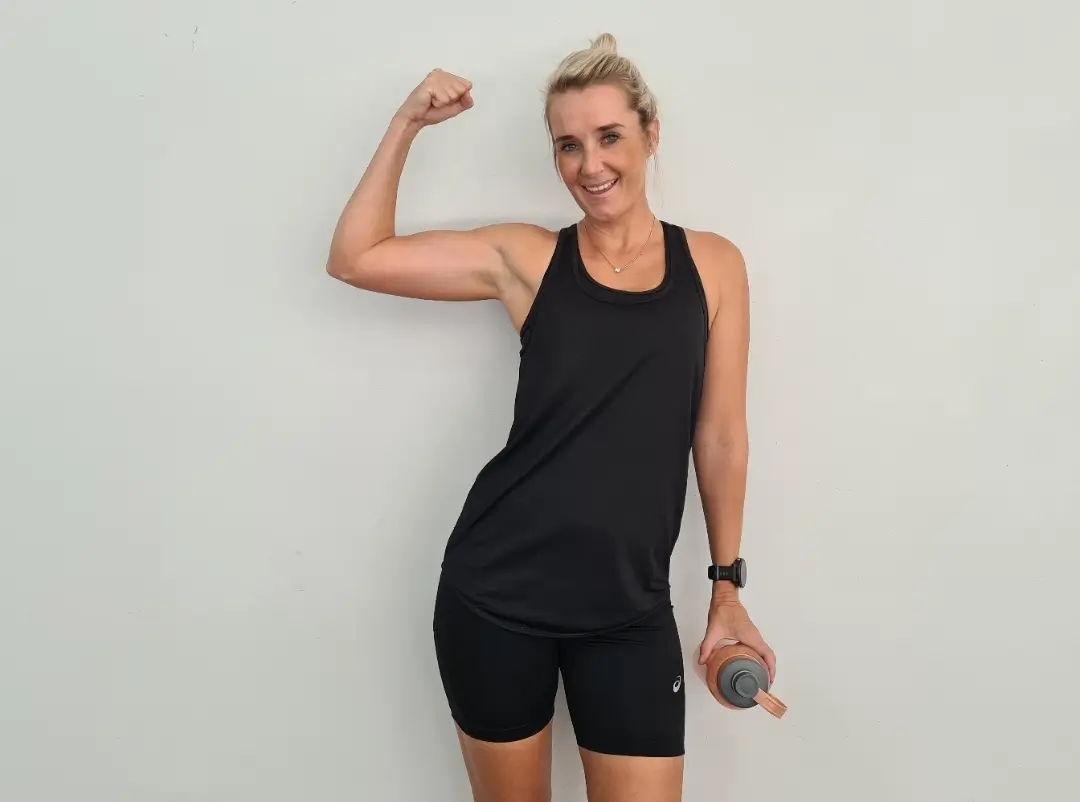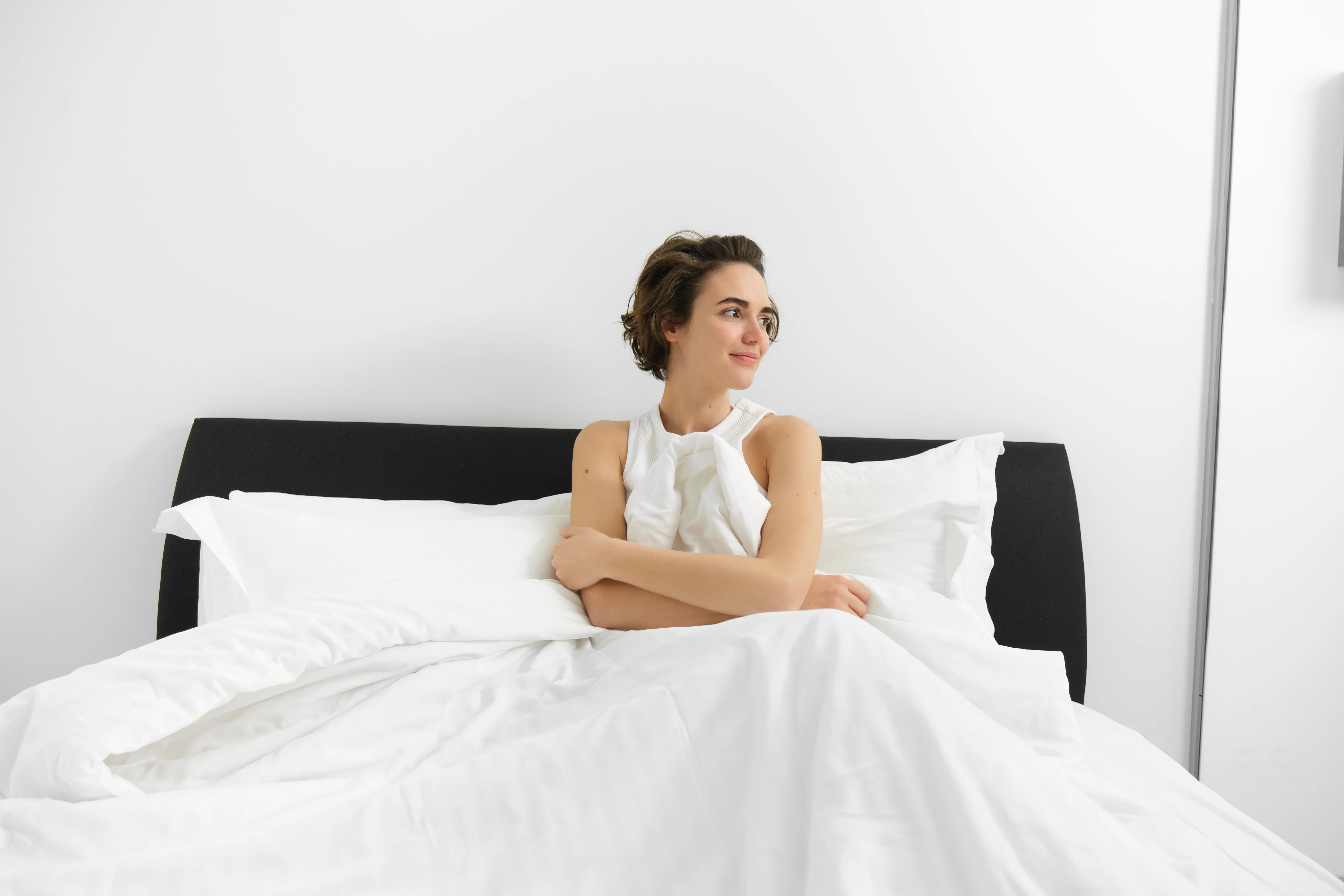When it comes to buying sheets, one term dominates the conversation: thread count. For years, the industry has marketed thread count as the benchmark for bedding quality, with a higher count being considered superior. However, although thread count has a significant impact on the feel and performance of sheets, it's not the only factor to consider.
To truly understand what makes bedding comfortable, durable, and worth your investment, it’s essential to look beyond the numbers. This article breaks down everything you need to know—from fabric types and weaves to finishes—busts the thread count myths, and explores what matters based on your sleep preferences.
What is Thread Count?
Thread count refers to the number of threads woven into one square inch of fabric, combining both horizontal (weft) and vertical (warp) threads. On the surface, a higher thread count suggests a denser, potentially softer fabric. However, the number alone doesn’t guarantee quality.
For example, a sheet with a 1000 thread count might sound luxurious, but it could be made from lower-quality, multi-ply yarns that feel heavier and less breathable. In contrast, a 300-thread-count sheet made from high-quality, long-staple cotton can feel far more comfortable and last longer.
Discover our top picks for the Best Bed Sheets Here.
The History of Thread Count and Its Significance
Thread count has been a measure of fabric quality for centuries, with its origins tracing back to the advent of textile manufacturing. Initially, it served as a straightforward indicator of the fabric's density and potential durability. As textile technology advanced, thread count became increasingly popular among consumers seeking high-quality bedding that promised comfort and durability.
Throughout history, thread count has been valued not only for functionality but also for its association with luxury. In the past, a higher thread count was often linked to opulence and exclusivity, reserved for the upper echelons of society. This historical context has contributed to the ongoing perception that higher thread counts are inherently superior.
The Relationship Between Thread Count and Sleep Quality

While thread count can influence your sleep experience, it is not the sole factor in determining sleep quality. A sheet with a suitable thread count can contribute to a comfortable sleeping environment by providing a smooth, soft surface that feels pleasant against your skin.
Thread Count Myths
When shopping for new bedding, thread count is often advertised as the most important factor in determining quality. However, there are several myths surrounding thread count that can mislead consumers.
Let’s debunk some of the most common misconceptions about thread count:
Myth 1: A Higher Thread Count Always Means Better Quality
The Truth: While a higher thread count can imply a denser fabric, it doesn't always mean better quality. The material type and weave also heavily influence the feel and durability of the fabric. More on how thread count affects quality will be discussed further in the article.
Myth 2: Thread Count is the Only Factor that Matters
The Truth: Thread count is important, but not the sole determinant of bedding quality. Fabric type (e.g., Egyptian cotton vs. standard cotton), weave type (percale vs. sateen), and finishing processes also play key roles in comfort and durability.
Myth 3: Higher Thread Counts Are Always Softer
The Truth: High thread count doesn’t necessarily equate to a softer feel. Sometimes, manufacturers use multi-ply threads to inflate the count without enhancing softness. Opt for a balanced thread count and premium materials for the ultimate comfort and feel.
Myth 4: All Fabrics Have the Same Thread Count Standards
The Truth: Thread count doesn’t apply the same way to all fabrics. For example, linen and bamboo typically have lower thread counts than cotton, yet they can be just as, if not more, comfortable. It’s worth considering the fabric type when evaluating thread count.
Myth 5: A Higher Thread Count Means Longer-Lasting Sheets
The Truth: While thread count can indicate durability, other factors like the quality of the material and weave are more crucial for longevity. Even with a high thread count, poor-quality fabric can degrade quickly.
Myth 6: Thread Count Only Matters for Cotton Sheets
The Truth: Thread count is a relevant factor for various fabrics, not just cotton. For instance, linen and bamboo, and more fabrics that will be discussed below, have specific thread count ranges that can enhance their natural properties. It's essential to adjust your expectations based on the fabric you're purchasing.
What to Look for Beyond Thread Count in Bedding

When shopping for bedding, consider factors beyond thread count that can lead to better choices.
Fabric Type
Fabric type plays a pivotal role in the overall quality of bedding. Different materials offer unique benefits that cater to various needs and preferences.
Each fabric type has its advantages and potential drawbacks, so it's essential to align your choice with your specific needs and expectations. By understanding the characteristics of each material, you can make more informed decisions that enhance both comfort and sleep quality.
- Cotton: Known for its softness, breathability, and durability. Look for long-staple varieties like Egyptian or Pima cotton for superior quality.
- Linen: A breathable, moisture-wicking fabric that’s ideal for hot sleepers. Though it starts off crisp, linen softens over time and offers a relaxed, lived-in look.
- Bamboo: Often blended with other materials like rayon or viscose, bamboo sheets are known for their silky texture, antibacterial properties, and eco-friendliness.
Weave Type
Weave type affects the texture, appearance, and performance of your bedding. It can influence everything from how cool the sheets feel to how well they resist wrinkles.
- Percale: A plain weave that creates a crisp, matte finish. Percale sheets are breathable and ideal for hot sleepers, though they may wrinkle more easily.
- Sateen: A satin weave that results in a smoother, shinier surface. Sateen sheets are soft and luxurious, with a heavier drape, but can trap more heat.
- Twill: Recognized by its diagonal weave pattern, twill is durable and resistant to wrinkles, making it a good choice for everyday use.
Finishing
Finishing processes can enhance or diminish a fabric’s natural qualities. Some finishes improve softness and wrinkle resistance, while others involve chemical treatments that may affect breathability or longevity.
- Chemical-free Finishing: Ideal for sensitive skin and eco-conscious shoppers. Look for labels like OEKO-TEX® or GOTS-certified.
- Mercerization: A common finishing treatment for cotton that increases luster, strength, and dye retention.
- Brushing or Calendaring: Used to soften the fabric or give it a smooth, polished appearance, often found in flannel or sateen sheets.
What’s a Good Thread Count for Sheets?
While thread count does matter, it’s not the sole indicator of quality. Too high a thread count can sometimes mean poor breathability or artificially inflated numbers.
Ideal Range for Everyday Use
- 200–400: A good range for most cotton sheets, offering a balance between softness, breathability, and durability.
- 300–500: Ideal for sateen or luxury blends that aim for a softer, silkier feel without compromising airflow.
- Over 600: Often achieved through multi-ply yarns; can be soft but may trap heat or feel too heavy for some sleepers.
Best Thread Counts by Fabric Type
- Egyptian Cotton: 300–400 for optimal softness and strength.
- Percale Cotton: 200–300 for a light, crisp feel.
- Sateen: 300–600 for a silky, smooth finish.
- Linen: Thread count is less relevant—look for weight (measured in GSM or ounces) instead.
- Bamboo: 250–350 is typically ideal for softness and breathability.
How to Choose the Right Sheets for You

Everyone has different sleep preferences, so the best sheets for you will depend on your body temperature, skin sensitivity, and personal comfort priorities. Here's how to find the perfect match based on your specific needs:
For Hot Sleepers
If you tend to overheat at night, breathability and moisture-wicking ability are key.
- Best Fabrics: Percale cotton, linen, bamboo.
- Why: These materials allow better airflow and help regulate body temperature. Linen, in particular, is highly breathable and naturally moisture-wicking.
- Weave to Look For: Percale — crisp and cool to the touch.
- Pro Tip: Stick with lighter colors and avoid synthetic blends that can trap heat.
For Cold Sleepers
If you often wake up chilly, look for sheets that retain warmth and feel cozy.
- Best Fabrics: Flannel, sateen cotton, and heavyweight linen.
- Why: These fabrics have a tighter weave or thicker construction, offering better insulation.
- Weave to Look For: Sateen or brushed flannel — both feel soft and warm against the skin.
- Pro Tip: Layer with a duvet or quilt made from natural materials for added warmth without overheating.
For Sensitive Skin
If your skin is easily irritated, softness and chemical-free finishes are non-negotiable.
- Best Fabrics: Organic cotton, bamboo, TENCEL™ lyocell.
- Why: These materials are naturally soft and often produced with fewer chemicals, making them gentler on skin.
- Weave to Look For: Sateen or jersey — both offer smooth, soothing textures.
- Pro Tip: Look for certifications like OEKO-TEX® or GOTS to ensure the sheets are free from harmful substances.
For Luxury Lovers
If you’re after that five-star hotel feel, look for premium fabrics and impeccable craftsmanship.
- Best Fabrics: Egyptian cotton, silk, high-end bamboo blends.
- Why: These materials offer a silky touch, high durability, and elegant drape.
- Weave to Look For: Sateen — smooth and lustrous for a luxurious feel.
- Pro Tip: Aim for thread counts between 400–600 and seek reputable brands that prioritize ethical sourcing and fine detailing.
FAQs
Does a higher thread count always mean better quality?
No, a higher thread count doesn't automatically equate to better quality. Factors such as fabric type, weave, and finishing processes are equally important in determining the comfort and durability of bedding.
What is the best thread count for cotton sheets?
For cotton sheets, a thread count between 200 and 800 is generally considered ideal. This range provides a good balance of softness, durability, and breathability.
How does the weave affect the feel of sheets?
The weave significantly influences the texture and feel of sheets. Percale offers a crisp, cool feel, while sateen provides a silky, smooth texture. Choosing the right weave depends on your personal comfort preferences.
What fabric is best for hot sleepers?
Cotton and linen are excellent choices for hot sleepers due to their breathability and moisture-wicking properties. Bamboo is also a good option for its cooling effects and silky texture.
How often should I replace my bedding?
Generally, high-quality bedding can last several years with proper care. However, if you notice signs of wear, such as thinning fabric or loss of elasticity, it might be time to consider replacements.
Conclusion
Choosing the right sheets isn’t just about chasing the highest thread count—it’s about understanding the full picture. From fabric type and weave to finishing processes and your unique sleep needs, every detail plays a role in creating a comfortable, restful experience.
Karen Barnard
Karen is a Human Movement Science expert and a certified sports nutrition and massage therapist. At Sleepiverse, she combines her passion for human movement science and sleep health to educate herself and her readers about healthier sleep. In addition to writing articles, Karen manages a fitness studio offering private training, athletic conditioning, and sports massage therapy. She focuses on providing people with a holistic environment for people to reach their health goals, often incorporating stretch therapy to promote mental tranquillity and help people improve their sleep.


